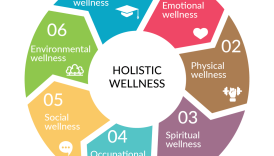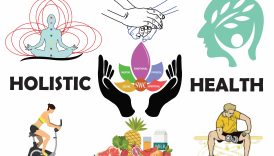Transforming Your Life with Natural Healthy Living

Importance of Natural Healthy Living
In today’s fast-paced world, maintaining a natural, healthy lifestyle has become increasingly important. Many people find themselves caught up in the hustle and bustle of daily life, often prioritizing convenience over health. However, embracing natural healthy living can lead to remarkable improvements in both physical and mental well-being. Consider this: a friend of mine, after years of struggling with low energy levels and frequent illnesses, decided to shift her focus toward natural living. She incorporated whole foods into her diet, reduced processed options, and focused on organic produce. In just a few weeks, she felt more energetic, vibrant, and most importantly, healthier. The importance of living naturally extends beyond just physical health. It’s about finding balance, embracing sustainable practices, and making conscientious choices that nurture our bodies as well as the environment. People who adopt a natural lifestyle often report feeling more connected to their surroundings and themselves.
- Transforming Your Life with Natural Healthy Living
- Importance of Natural Healthy Living
- Benefits of Transforming Your Life
- Eating Well for a Healthier Life
- Understanding Nutrient-Rich Foods
- Incorporating Superfoods into Your Diet
- The Power of Regular Exercise
- Types of Physical Activities
- Creating an Effective Workout Routine
- Prioritizing Mental Wellbeing
- Practicing Mindfulness and Meditation
- Managing Stress through Relaxation Techniques
- Importance of Quality Sleep
- Establishing a Bedtime Routine
- Creating a Restful Sleep Environment
Benefits of Transforming Your Life
Transforming one’s lifestyle can come with numerous benefits that extend beyond the individual. The ripple effect can positively impact family, friends, and even the community. Here are a few key benefits of embracing such a transformation:
- Improved Physical Health: A well-rounded approach leads to better immunity, enhanced energy levels, and a lower risk of chronic illnesses.
- Better Mental Clarity: Engaging in natural living often includes practices like mindfulness and reducing toxins, which can sharpen focus and mental acuity.
- Emotional Resilience: Creating a balanced life can improve emotional stability, reducing anxiety and fostering a greater sense of joy.
- Sustainable Choices: Choosing natural products and practices contributes to environmental protection and promotes sustainable living.
Ultimately, transforming one’s life through natural healthy living is not just a personal choice; it’s a commitment to fostering well-being that serves both individuals and the planet. So, why not start this journey today?
Eating Well for a Healthier Life
Understanding Nutrient-Rich Foods
Continuing on the journey toward natural healthy living, one of the most impactful changes someone can make is to their diet. Eating well transcends just monitoring calories; it’s about understanding the quality of what we consume. Nutrient-rich foods—those packed with vitamins, minerals, and other essential nutrients—form the foundation of a healthy diet. For instance, when a colleague of mine began tracking the nutritional content of her meals, she discovered she was consuming way more empty calories than she thought. Swapping convenience foods for whole grains, fresh fruits, and vegetables not only improved her physical health but also made her feel fuller and more satisfied throughout the day. Here are some examples of nutrient-rich foods to consider including in your diet:
- Leafy Greens: Spinach, kale, and swiss chard are excellent sources of vitamins A, C, K, and several essential minerals.
- Lean Proteins: Chicken, fish, legumes, and tofu are great options to support muscle repair and growth.
- Whole Grains: Quinoa, brown rice, and oats provide fiber and energy while maintaining steadier blood sugar levels.
Incorporating Superfoods into Your Diet
Next on the list for anyone keen on enhancing their diet is incorporating superfoods—foods that are exceptionally dense in nutrients and beneficial compounds. Adding a sprinkle of these nutritional powerhouses can help elevate overall health. Examples of popular superfoods that are easy to incorporate include:
- Berries: Whether they are blueberries or acai berries, they are rich in antioxidants that combat oxidative stress.
- Chia Seeds: These tiny seeds are loaded with omega-3 fatty acids, fiber, and protein, making them a perfect addition to smoothies or yogurt.
- Nuts and Seeds: Almonds, walnuts, flaxseeds, and pumpkin seeds can provide healthy fats and protein, serving as excellent snacks.
To successfully integrate superfoods into daily meals, consider these simple ideas:
- Add berries to your breakfast oatmeal or cereal.
- Mix chia seeds into smoothies or puddings for an extra crunch.
- Snack on a handful of nuts during the afternoon slump to boost energy without sugar.
By understanding the role of nutrient-rich foods and incorporating superfoods, anyone can take significant steps toward achieving a healthier life. The food choices made today will echo into the future, enhancing overall wellness and vitality.
The Power of Regular Exercise
Types of Physical Activities
As we delve deeper into the transformative lifestyle changes that come with natural healthy living, regular exercise stands out as a cornerstone for achieving optimal health. Engaging in physical activity not only helps maintain a healthy weight but also enhances mental well-being and boosts energy levels. The beauty of exercise lies in its variety; there’s a perfect fit for everyone, regardless of preferences. For instance, a friend of mine recently rediscovered her love for dancing after a long hiatus. What began as a fun way to stay active quickly evolved into her favorite stress relief and social outlet. Here are some types of physical activities to consider:
- Cardiovascular Exercises: Activities like running, cycling, or swimming effectively elevate heart rate and improve cardiovascular health.
- Strength Training: Lifting weights or doing bodyweight exercises like push-ups and squats helps build muscle and enhances metabolism.
- Flexibility Exercises: Yoga and Pilates not only improve flexibility but also promote relaxation and mindfulness.
- Recreational Activities: Engaging in team sports, hiking, or even gardening can be a great way to remain active while enjoying the outdoors.
Creating an Effective Workout Routine
Creating a balanced and effective workout routine is all about setting realistic goals and incorporating a variety of physical activities. Here are some tips to help you get started:
- Assess Your Fitness Level: Know where you stand and set achievable goals based on that assessment. This will help in tracking your progress.
- Choose Activities You Enjoy: If you hate running but love dancing, then opt for dance classes to ensure you stick with your routine.
- Mix it Up:Incorporate different types of exercises to prevent boredom and work various muscle groups. A typical weekly routine could include:
- Cardio: 3 days/week
- Strength Training: 2 days/week
- Flexibility or Yoga: 1-2 days/week
- Schedule Your Workouts: Treat your exercise sessions like appointments. Having a set time makes it more likely you’ll stick with it.
- Listen to Your Body: Whether it’s feeling fatigued or needing rest days, tuning into your body plays a crucial role in sustainable activity.
By recognizing the types of physical activities and crafting an effective workout routine, anyone can harness the power of regular exercise. As a result, not only will one’s physical health improve, but mental clarity and emotional well-being will follow suit, leading to a more balanced and fulfilling life.
Prioritizing Mental Wellbeing
Practicing Mindfulness and Meditation
As we continue to explore the pillars of natural healthy living, it’s essential to shine a light on the often-overlooked area of mental well-being. Prioritizing mental health is just as crucial as focusing on physical health, as they are deeply interconnected. One effective way to nurture mental well-being is through practicing mindfulness and meditation. A personal experience illustrates this beautifully. After a particularly hectic work week, I decided to try mindfulness meditation. Initially skeptical, I sat quietly for ten minutes, focusing on my breath. To my surprise, this simple practice instantly calmed my racing thoughts and helped me reconnect with the present moment. Mindfulness involves being fully present and engaging in the current moment without judgment. Here are some ways to integrate mindfulness and meditation into daily routines:
- Daily Mindfulness: Take a few minutes each day to focus completely on an activity—whether it’s eating a meal, walking, or even doing chores. Engage your senses fully.
- Guided Meditations: Apps like Headspace or Calm offer accessible guided sessions that can help beginners ease into meditation practices.
- Deep Breathing Exercises: Pause throughout the day to take deep, intentional breaths—inhale for four counts, hold for four, and exhale for four.
Managing Stress through Relaxation Techniques
Along with mindfulness, managing stress effectively is vital for mental health. Stress, if left unchecked, can lead to various physical and psychological problems. Thankfully, there are several relaxation techniques that anyone can incorporate into their daily lives. Consider my neighbor, who often felt overwhelmed by work deadlines. After we discussed some stress management strategies, she began scheduling short relaxation breaks throughout her day, and the difference was remarkable. Here are some relaxation techniques to consider:
- Progressive Muscle Relaxation: Tense and then relax each muscle group systematically, starting from your toes and working up to your head.
- Visualization: Picture a peaceful scene or a favorite place in your mind. Engage all your senses to enhance the experience and fully immerse in that moment.
- Journaling: Setting aside time to write down thoughts and feelings can be incredibly cathartic and help bring clarity to swirling emotions.
- Nature Walks: Spending time in nature not only boosts mood but also reduces stress levels. Observing the beauty around while walking can be meditative in itself.
By intentionally prioritizing mental well-being through mindfulness practices and stress management techniques, individuals can cultivate a balanced life, reducing anxiety while enhancing happiness and fulfillment. The path to mental wellness is a journey, but with small, consistent efforts, anyone can navigate it successfully.
Importance of Quality Sleep
Establishing a Bedtime Routine
As we wrap up our exploration of holistic practices for natural healthy living, we cannot overlook the significance of quality sleep. Sleep is often underestimated, yet it plays a critical role in maintaining overall health, impacting both physical and mental wellness. Just like nourishing the body through food and exercise, prioritizing sleep is essential. A few months ago, I decided to adopt a consistent bedtime routine. After years of erratic sleep patterns, I found that creating a nightly ritual significantly improved my sleep quality. Establishing a bedtime routine signals to the body that it’s time to wind down and prepare for rest. Here are some effective steps to help craft a bedtime routine:
- Set a Consistent Sleep Schedule: Aim to go to bed and wake up at the same time every day to regulate your body’s internal clock.
- Limit Screen Time: Turn off electronic devices at least an hour before bed. The blue light emitted by screens can interfere with the production of melatonin, the hormone responsible for sleep.
- Engage in Relaxing Activities: Consider reading a book, taking a warm bath, or practicing gentle stretching to ease into sleep mode.
- Incorporate Breathing Exercises: Spend a few minutes focusing on deep breathing to release tension and prepare your mind for sleep.
Creating a Restful Sleep Environment
Alongside a bedtime routine, creating a restful sleep environment is equally essential. The atmosphere in which you sleep can greatly affect how quickly you fall asleep and the quality of your sleep. For example, my partner transformed our bedroom into a sanctuary by making a few simple changes. The result? We both started waking up feeling more refreshed and energized. Here’s how to cultivate a calming sleep environment:
- Optimize Room Temperature: Keep the bedroom cool, ideally between 60-67°F (15-19°C), as a cooler temperature can promote better sleep.
- Minimize Noise and Light: Consider blackout curtains to block out unwanted light and earplugs or white noise machines to drown out disruptive sounds.
- Choose Comfortable Bedding: Invest in a quality mattress and soft linens. Comfort plays a significant role in ensuring uninterrupted sleep.
- Add Calming Scents: Essential oils like lavender have been shown to promote relaxation. Consider using an oil diffuser or lavender-scented pillows.
Prioritizing quality sleep through an established routine and a restful environment can dramatically enhance one’s overall well-being. When individuals commit to quality rest, they set the foundation for improved mental clarity, emotional stability, and heightened energy levels throughout the day. Sleep is not merely a luxury; it is a necessity for a fulfilling and healthy life. So, why not make it a priority?





